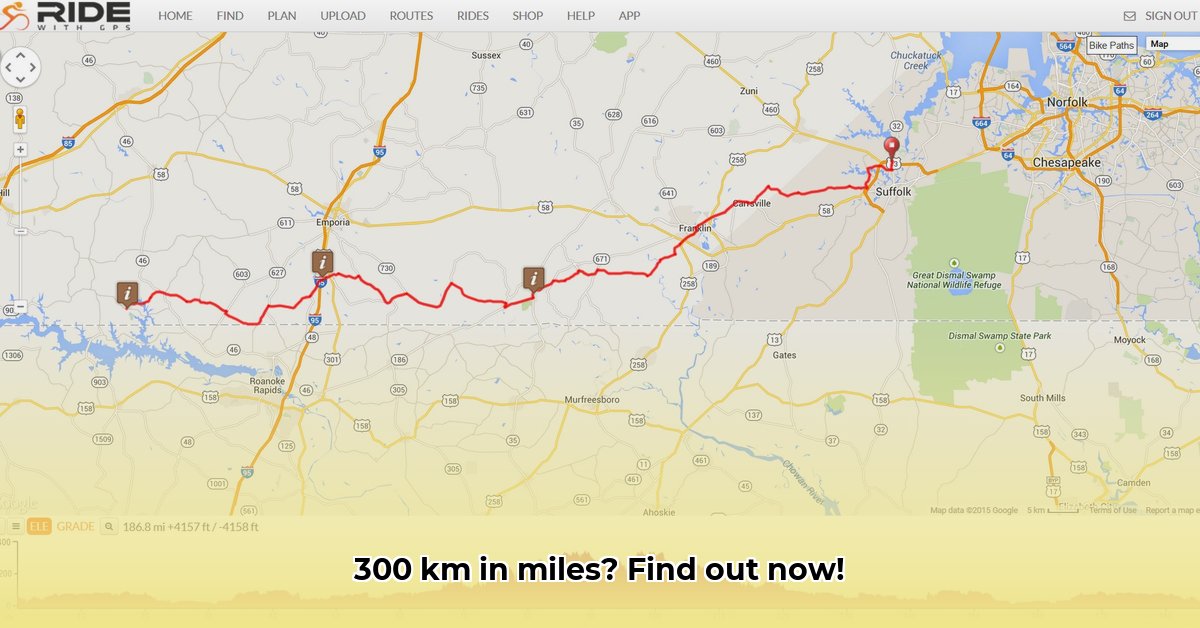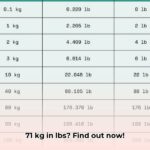Ever find yourself staring at a map, wondering just how far 300 kilometers really is? It’s a common question, especially when you’re planning a trip or just trying to figure out distances. For more on converting kilometers to miles, check out this helpful guide on converting 200km to miles. Kilometers and miles are like two different languages for measuring distance, and knowing how to translate between them can be super helpful. This guide will walk you through converting 300 kilometers into miles, showing you different ways to do it so you can always get the right answer. We’ll cover everything from simple calculations to more precise methods. Whether you’re a seasoned traveler or just curious, we’ll make sure you understand how to do this conversion confidently and accurately.
How Many Miles is 300 km? Conversion Accuracy
Ever wondered how far 300 kilometers really is? It’s a question many people ask, especially when planning a road trip or comparing distances between cities. The simple answer isn’t just a single number, though; it depends on how precise you need to be. Let’s dive in and explore how to make this conversion and why the accuracy can vary, focusing on the best conversion methods.
Kilometers and Miles: A Tale of Two Systems
First, let’s get a handle on the units themselves. Kilometers (km) are part of the metric system—the worldwide standard for measuring distances. One kilometer is equal to 1,000 meters. Miles (mi), on the other hand, belong to the imperial system, mostly used in the United States and the United Kingdom. A mile is defined as 5,280 feet or 1,760 yards. This difference in measurement systems explains why we need a conversion. It’s like trying to fit square pegs into round holes—it takes a bit of work! Did you know that the metric system is used by almost every country in the world?
The key to converting kilometers to miles is knowing the conversion factor. This factor tells us how many miles are in a single kilometer. Simply put, it’s a mathematical bridge that lets us move between these two systems. The internationally recognized symbols are “km” for kilometer and “mi” for mile.
Figuring Out the Distance: Two Approaches
Now, let’s tackle converting 300 kilometers to miles. We’ll use two methods: a quick, everyday approach, and a more precise method. Think of it like baking a cake: sometimes a pinch of salt is good enough, other times, you need a precise measurement.
Method 1: The Quick Estimate
This method uses a simplified conversion factor. We’ll round things off to make the calculation easier, which can be incredibly helpful for quick mental math.
- The Conversion Factor: We’ll use the approximation that 1 kilometer equals roughly 0.62 miles.
- The Math: Multiply the number of kilometers by the conversion factor: 300 km * 0.62 miles/km.
- The Result: You’ll get approximately 186 miles. This is a close enough estimate for most everyday situations. Need to know roughly how long a drive will take? This method provides a very good estimate.
Method 2: The Precise Calculation
For situations demanding more accuracy, like mapping software or scientific applications, a more precise method is required; this method aims to get the most exact number possible.
- The Finer Conversion Factor: A more precise conversion factor is 0.621371 miles per kilometer. You might find even more decimal places if you’re working with highly specialized applications.
- Let’s Calculate: Now, multiply 300 km by this more precise factor: 300 km * 0.621371 miles/km.
- The Result: This yields approximately 186.41 miles. As you can see, the difference between this and the quick method is small, but it’s there—and that difference becomes more significant over longer distances.
Why the Slight Discrepancies? Unit Conversion Variances
The small differences between these methods arise from rounding. Using more decimal places in the conversion factor gives a more refined result. However, for most daily needs, the simpler approach is completely adequate. It’s like measuring ingredients for cooking – a precise measurement isn’t always necessary. Scientific applications typically require a high degree of accuracy, often down to several decimal places, especially in fields like engineering and physics.
Not All Miles Are Created Equal: Statute vs. Nautical Miles
It’s important to remember that “mile” isn’t always uniform. There are various types of miles, the most common being the statute mile which is what we’ve used in our calculations here. There’s also the nautical mile, used in navigation and maritime settings, and its length is different than the statute mile. A nautical mile is exactly 1.852 kilometers (approximately 1.15 statute miles). Therefore, if you are working with nautical miles, you would need a different conversion factor.
When Precision Really Matters for Conversion
So, how many miles is 300 km? For planning a road trip or a casual conversation, about 186 miles is just fine. However, for tasks requiring precision, like precise map coordinates or scientific calculations, using the more accurate conversion is crucial. Think about it like this – if you’re building a house, you need precise measurements, but if you need to estimate how much paint to buy, an approximation will probably suffice. The context and your needs dictate the accuracy you require.
How to Accurately Convert Kilometers to Miles for Long Distances: Distance Calculations
Key Takeaways:
- Multiple methods exist for converting kilometers to miles, each with varying degrees of accuracy, which is vital for many.
- The most precise method uses the conversion factor 0.621371, yielding the most accurate results, especially for long distances.
- Simpler methods, such as multiplying kilometers by 0.62, offer quick estimations but sacrifice precision.
- Understanding the context is key. High accuracy is crucial for navigation or scientific calculations; estimations suffice for everyday purposes.
- The impact of rounding errors increases as distances grow, becoming critical as the distance gets longer.
Understanding the Need for Accurate Conversion
Ever wondered exactly how to accurately convert kilometers to miles for long distances? It’s more than just a simple calculation; accuracy matters, especially when planning long trips or working with large-scale data. Using the precise conversion factor of 0.621371 is essential for minimizing errors. For example, converting 1,000 kilometers using the approximate factor of 0.62 yields 620 miles, while the precise conversion yields 621.371 miles—a difference of 1.371 miles. A slight error in converting a few hundred kilometers can significantly impact your travel time estimation and fuel calculations. Why is accuracy so vital in long-distance calculations?
Methods for Converting Kilometers to Miles: Conversion Made Simple
Several techniques exist for converting kilometers to miles. Let’s explore the most common:
-
Precise Conversion: The most accurate method involves multiplying the number of kilometers by the conversion factor 0.621371. This formula ensures the highest degree of accuracy. For example, 300 km * 0.621371 ≈ 186.41 miles.
-
Approximate Conversion: For quick estimations, you can use simpler methods. Multiplying the number of kilometers by 0.62 provides a reasonably close approximation. While less precise, it’s handy for mental calculations. Another approximation is to multiply by 5/8 (since 0.625 is close to 0.621371).
-
Online Converters: Numerous online tools offer instant conversions. Calculateme.com and Unitconverters.net are reliable resources. These calculators are incredibly convenient and often handle the calculations with high precision. Simply input the kilometers, and you have the miles.
Comparing Accuracy Across Methods: Conversion Precision
Let’s compare the accuracy of different methods for converting 300 kilometers:
| Method | Calculation | Miles | Error (miles) |
|---|---|---|---|
| Precise Conversion | 300 km × 0.621371 | 186.41 | 0 |
| Approximation (× 0.62) | 300 km × 0.62 | 186.00 | 0.41 |
| Approximation (× 5/8) | 300 km × (5/8) | 187.50 | -1.09 |
As you can see, the error increases with simpler methods, particularly for long distances. The difference between the precise and approximate methods becomes more noticeable as the kilometer value increases.
Choosing the Right Method: Best Conversion Approach
The best method depends on your needs. For precise navigation systems, scientific papers, or long-distance planning, the precise conversion is essential. However, if a rough estimate is sufficient – such as for quick mental calculations – the approximate method becomes useful















